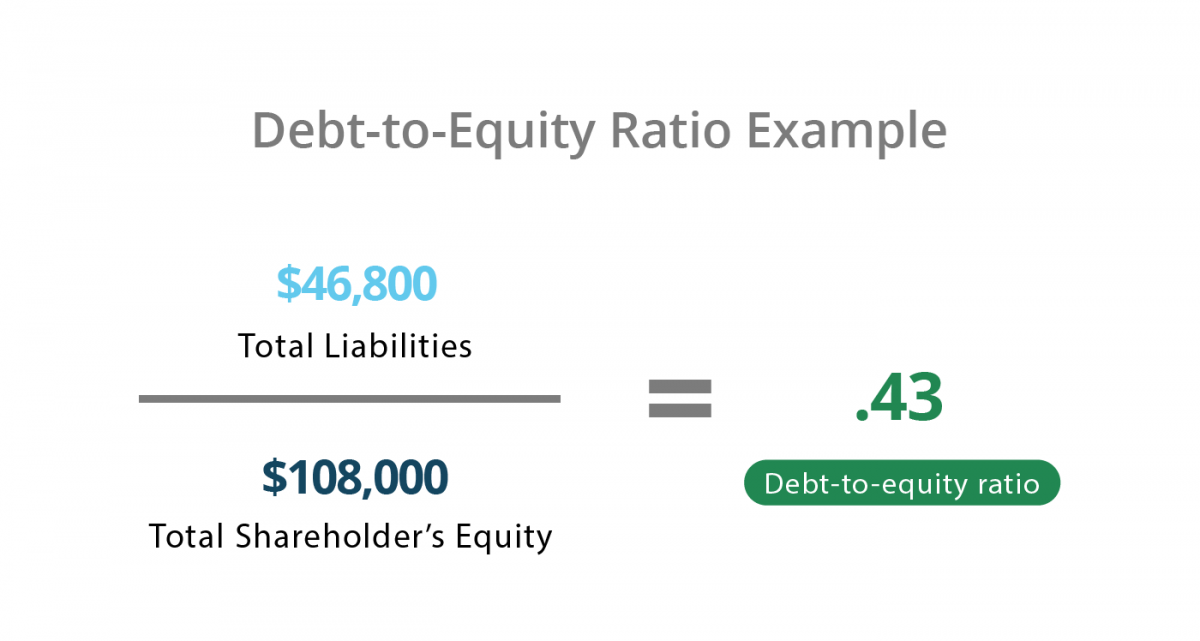
If preferred stock appears on the debt side of the equation, a company’s debt-to-equity ratio may look riskier. While acceptable D/E ratios vary by industry, investors can still use this ratio to identify companies in which they want to invest. First, however, it’s essential to understand the scope of the industry to fully grasp how the debt-to-equity ratio plays a role in assessing the company’s risk. Banks and other lenders keep tabs on what healthy debt-to-equity ratios look like in a given industry. A debt-to-equity ratio that seems too high, especially compared to a company’s peers, might signal to potential lenders that the company isn’t in a good position to repay the debt.
Q. What impact does currency have on the debt to equity ratio for multinational companies?
- This is in contrast to a liquidity ratio, which considers the ability to meet short-term obligations.
- You can find the balance sheet on a company’s 10-K filing, which is required by the US Securities and Exchange Commission (SEC) for all publicly traded companies.
- The debt-to-equity (D/E) ratio is a metric that provides insight into a company’s use of debt.
Let’s look at a few examples from different industries to contextualize the debt ratio. It gives a fast overview of how much debt a firm has in comparison to all of its assets. Because public companies must report these figures as part of their periodic external reporting, the information is often readily available. However, a low D/E ratio is not necessarily a positive sign, as the company could be relying too much on equity financing, which is costlier than debt.
What Industries Have High D/E Ratios?
Industries that are capital-intensive, such as utilities and manufacturing, often have higher average ratios due to the nature of their operations and the substantial amount of capital required. Therefore, it is essential to align the ratio with the industry classified balance sheet averages and the company’s financial strategy. The D/E ratio is a powerful indicator of a company’s financial stability and risk profile. It reflects the relative proportions of debt and equity a company uses to finance its assets and operations.
Q. Are there any limitations to using the debt to equity ratio?
To illustrate, suppose the company had assets of $2 million and liabilities of $1.2 million. Since equity is equal to assets minus liabilities, the company’s equity would be $800,000. Its debt-to-equity ratio would therefore be $1.2 million divided by $800,000, or 1.5.
What Is Considered a High Debt-To-Equity (D/E) Ratio?

Most of the information needed to calculate these ratios appears on a company’s balance sheet, save for EBIT, which appears on its profit and loss statement. By examining a company’s debt ratio, analysts and investors can gauge its financial risk relative to peers or industry averages. Conversely, the short-term debt ratio concentrates on obligations due within a year.
Can a Debt Ratio Be Negative?
The debt-to-equity ratio is one of several metrics that investors can use to evaluate individual stocks. At its simplest, the debt-to-equity ratio is a quick way to assess a company’s total liabilities vs. total shareholder equity, to gauge the company’s reliance on debt. Another popular iteration of the ratio is the long-term-debt-to-equity ratio which uses only long-term debt in the numerator instead of total debt or total liabilities. This second classification of short-term debt is carved out of long-term debt and is reclassified as a current liability called current portion of long-term debt (or a similar name).
It’s useful to compare ratios between companies in the same industry, and you should also have a sense of the median or average D/E ratio for the company’s industry as a whole. For companies that aren’t growing or are in financial distress, the D/E ratio can be written into debt covenants when the company borrows money, limiting the amount of debt issued. When making comparisons between companies in the same industry, a high D/E ratio indicates a heavier reliance on debt. Publicly traded companies that are in the midst of repurchasing stock may also want to control their debt-to-equity ratio.
The debt-to-equity ratio or D/E ratio is an important metric in finance that measures the financial leverage of a company and evaluates the extent to which it can cover its debt. It is calculated by dividing the total liabilities by the shareholder equity of the company. Additionally, different types of debt ratios, such as the debt-to-equity ratio, long-term debt ratio, and short-term debt ratio, provide further insights into a company’s financial health and financing strategies. A debt ratio of 30% may be too high for an industry with volatile cash flows, in which most businesses take on little debt. A company with a high debt ratio relative to its peers would probably find it expensive to borrow and could find itself in a crunch if circumstances change. Conversely, a debt level of 40% may be easily manageable for a company in a sector such as utilities, where cash flows are stable and higher debt ratios are the norm.
The D/E ratio is part of the gearing ratio family and is the most commonly used among them. The D/E ratio is much more meaningful when examined in context alongside other factors. Therefore, the overarching limitation is that ratio is not a one-and-done metric. The investor has not accounted for the fact that the utility company receives a consistent and durable stream of income, so is likely able to afford its debt. They may note that the company has a high D/E ratio and conclude that the risk is too high. For this reason, it’s important to understand the norms for the industries you’re looking to invest in, and, as above, dig into the larger context when assessing the D/E ratio.

